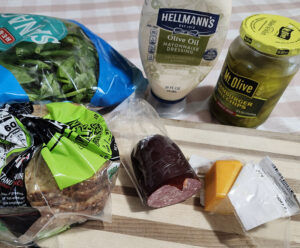 Sept 17, 2025–When you make any transaction, what are you really paying for?
Sept 17, 2025–When you make any transaction, what are you really paying for?
Someone complained about paying $20 for a fast-food sandwich (future archivists–$20 is a LOT to pay for a basic sandwich in 2025–although that is changing daily). Another someone pointed out–before I could do so–that $20 would have bought a loaf of good bread, a package of deli meat, lettuce, onion, and condiments. And it would have been enough to make 10 sandwiches.
You could apply that logic to eating out at any restaurant. In my poverty days, I struggled when we hosted kid parties at a buffet pizza joint. As I handed over $100, I thought about how many frozen pizzas that would have bought in 1990. At least 30, plus enough sodas and chips to satiate the teen table at a church picnic.
But, as my family continually has to remind me, eating out is not about the food. It’s about marking the occasion, gathering with friends and family, creating memories, blah blah blah.
That’s the wrong argument. For guys, well, at least for this guy, the better argument for over-spending dollars is in the efficient use of time. Back to that $20 sandwich. Sure, you could build a better burger buying all the ingredients yourself. But it requires a trip to the supermarket, schlepping the groceries home, grilling the meat, slicing the toppings, and assembling the sandwich. Congratulations. You’ve just spent two hours to save ten bucks. Even if you are a worker getting paid minimum wage at that burger joint, your time is worth at least twice that amount.
This counterintuitive “cheat code” applies in many fields.
Recently I had to string up a barrier to keep people from parking in an empty lot. Frugal Phil would have strung together mismatched lengths of twine, scrounged some baling wire, borrowed a metal clip from the feed bucket, and hand penciled a piece of cardboard with “No Trespassing.”
Wiser Phil went to a hardware store, spent $25 for everything on that list, plus a delicious granola nut bar and bottle of fizzy water, finished the project, and was back home by the time Frugal Phil was still looking for his rusty pair of wire cutters. As to that, I will now just buy a new tool rather than scrounge to find one I already own.
For most guys, we know we jumped the shark when we stop changing our own oil and started taking our trucks down to the quick lube. We figure out something our wives learned long ago–it’s easier to let a trained tech in a jumpsuit change our oil while we sip watered-down lattse and nibble on a stale cookie.
The point is, when we enter an establishment and purchase any product, the cost of the physical object is only a portion of what we are paying for. And often, a very small portion. A true transaction is handing over your filthy lucre for saved time, increased convenience, less travel, and higher efficiency. More and more I find I buy unnecessary stuff just because I crave the interaction with the checkout clerk.
Who would have thought that the intangibles of any purchase trump the tangible savings? I guess it’s why we buy–an open secret understood by merchants ever since traders began hauling spices from the Orient and enticing passersby in open air markets.
So go ahead and indulge in that overpriced sandwich. You’re part of history.